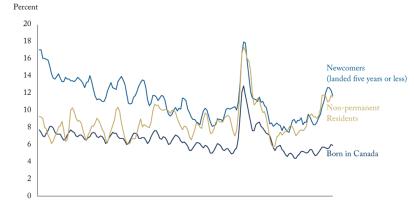Sources of oil and natural gas revenue for Alberta, B.C., Saskatchewan, Newfoundland and Labrador, and the Rest of Canada.
- Show Tab:
Oops! If you are seeing this message, it may be because the chart is not displaying correctly. Try upgrading your browser or enabling Javascript.
C.D. Howe Institute | Source: Canadian Association of Petroleum Producers, Alberta's Public Accounts
From 2009 to 2013, Canadian governments collected about $79 billion in resource-specific revenues, $15 billion of which came in 2013 alone. Of this $79 billion, $75 billion came from natural gas, as well as conventional oil and bitumen from oil sands. Mining taxes accounted for the remaining $4 billion. Alberta, BC, Saskatchewan and Newfoundland and Labrador collected over 90 percent of total oil and natural gas revenue. The chart above displays the scope of resource royalties in each province (when companies develop resources, they must pay a “royalty” to the province who owns the resources), compared to resource-right auctions (when companies bid on the right to explore and/or develop resources on a given plot of land). It also leads to the question – Can the provinces collect more royalty revenue while not harming investment in mining and oil and natural gas extraction?
For more on this topic, and how there is a better alternative to current royalty systems, read “Drilling Down on Royalties: How Canadian Provinces Can Improve Non-Renewable Resource Taxes,” by Institute authors Robin Boadway and Ben Dachis.
For simplicity, fiscal and calendar years are aggregated in the Total tab.




